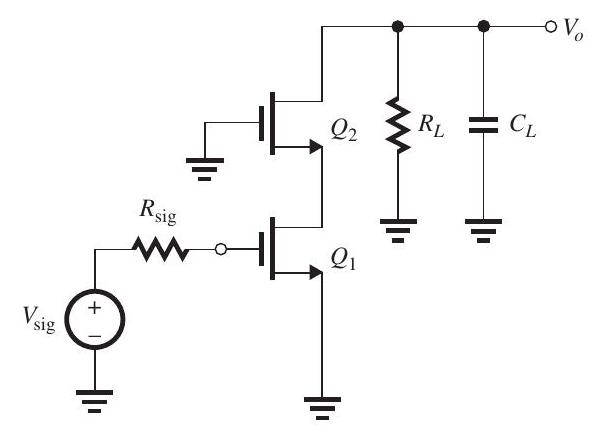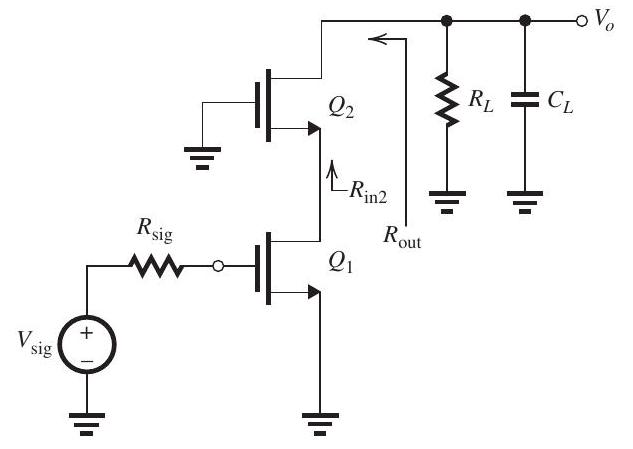
Figure 10.5.1

Figure 10.5.2
(a) The MOSFET in the common-source amplifier in Fig. 10.5.1, where the dc bias arrangement is not shown, is operating at and and has . The transistor capacitances are specified as and . Also, there is an additional capacitance between the output node and ground, . Find the overall de gain , the upper 3-dB frequency , and the gain-bandwidth product . To determine , use the method of open-circuit time constants and recall that the resistance seen by is given by , where .
(b) To increase , the common-source transistor is cascoded as shown in Fig. 10.5.2 (refer to Figure above), where the dc bias arrangement is not shown. For the same values of , and as in (a), assuming and are biased so that and , and for the capacitances of and to have the same values as specified in (a) above, find , and for the cascode amplifier. Recall that and .
In using the open-circuit time-constants method, adapt the formula given in (a) for to obtain . By what factor is increased?
Correct Answer:
Verified
Figure 10.5.1
Figure 10.5.2
...
View Answer
Unlock this answer now
Get Access to more Verified Answers free of charge
Q1: A common-source amplifier is fed from
Q2: (a) Sketch the high-frequency equivalent circuit
Q3: (a) An NMOS common-source amplifier with
Q4: Q6: The MOSFET in the common-source amplifier Q7: The amplifier in Fig. 10.7.1 Q8: For the amplifier circuit in Fig. Q9: The MOSFET in the common-source amplifier Q10: ![]()
![]()
Unlock this Answer For Free Now!
View this answer and more for free by performing one of the following actions

Scan the QR code to install the App and get 2 free unlocks

Unlock quizzes for free by uploading documents